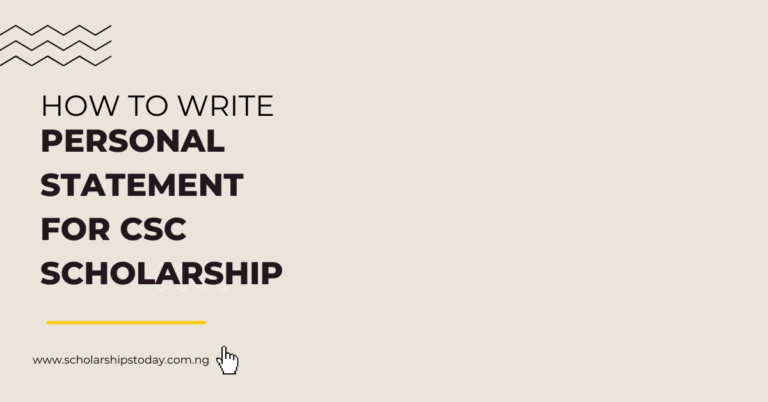It is one thing to apply for a scholarship, and another to be awarded that scholarship. Most times, the processes involved in applying for scholarships can be very stressful, even for those in dire need of it, especially with reference letters. To be on the safer side, learning how to write reference letter for scholarship can make all the difference.
Scholarship awarders do not want to waste money; they want to ensure their funds serve the right purpose. A reference letter is one of the ways scholarship awarders assess those truly qualified for their scholarship awards.
Reference letters are attestation or recommendation letters written for applicants seeking employment, admission, or a scholarship. They serve as an augmentation to curriculum vitae and letters of intent. However, reference letters provide a succinct evaluation of the applicant’s achievements and personality and leadership skills. The writer of the reference letter must be familiar with whom he/she is writing for; that is the first rule of reference letter writing.
Reference letters cannot be written casually. There is a specific way to write a good reference letter that will increase the chances of securing that scholarship program.
I will guide you on how to write a reference letter for a scholarship—covering anything related to scholarships. If you have any specific questions or need further clarification, feel free to ask!
How to Write Reference Letter for Scholarship
Scholarship applications require students applying to submit a 500 words reference letter. As I’ve said earlier, this is written by someone in testimony to another. Here are specific details to consider in writing it.
- How well do you know the applicant?
The first rule of writing a good reference letter without stress is your level of familiarity with the student seeking a scholarship. How well do you know this person? How long have you worked or been together? What can you say are his character traits?

If you were to be the awarder of the scholarship, would he/she be on your A-list?
For you who are seeking a scholarship and are asked to submit a reference letter, how much do you know your referee? How much information about you do you think your referee will be willing to share? Do you trust your referee for a reference letter? A single statement can deny you that scholarship and can also win you one.
The idea is to share those personal qualities that will sell the candidate as the ideal person the scholarship requires.
- Including the student in the work
To get the best out of a reference letter, you have to include the student in the writing process. The student should help you do the job by giving you the necessary materials that will ease the writing process. Materials such as his curriculum vitae, academic achievements/scoresheet, and other important information will be helpful. It will also be helpful to ask the student about his/her greatest abilities and what he/she thinks are his/her best achievements so far—things the student often finds himself/herself bragging about. The reason for all these is not to leave relevant information about the applicant behind, which could be essential for getting him/her the scholarship award.
- Writing properly (First Paragraph)
The first paragraph of your reference letter should, of course, state the purpose of your letter: who is writing and for what purpose. Your level of acquaintanceship with the student should be stated too (where did you know him/her, and how long have you known each other?), and your position (are you his lecturer, research supervisor, dean, pastor, etc.?). Why did the student choose you for the reference letter, and why did you accept to write it?
- Writing continues (body paragraphs)
After your introduction, comes the reason you think your student should be awarded the scholarship. You start to assess your student, keeping in mind that reviewers of your letter are also looking for key examples of your claims about your student. It is good to start with your student’s interesting abilities and qualities and what they have achieved through those abilities. In doing this, you will have to cite some particular instances where such qualities were displayed and the outcome of them. You will also have to compare the applicant with other students you have taught or known and what makes him/her unique, more outstanding, and better than the others.

- Body paragraphs (Additional vital information)
At this stage, you are going to take your reader deep into knowing what kind of person the applicant is and why he/she should be on their choice list. You begin to talk about his/her academic and behavioral skills. Rate the student’s level of knowledge and how he/she has demonstrated such knowledge and in which situation. Talk about the student’s devotion to learning, rating his level of hard work and self-discipline. Also, talk about the improvements you have noticed in the student. You can employ common adjectives to describe the student’s behavior, such as cooperative, accommodating, generous, intelligent, adventurous, diligent, determined, reliable, etc.
- Last paragraph (reaffirmation and conclusion)
This is the paragraph where you reaffirm your support for your student, with a concluding remark of your strong recommendation for the student for the scholarship award. Don’t forget to call on the reviewer(s) to contact you if they have any further questions. An example of a very good closing remark would be; “I, therefore, strongly recommend Wisdom Augustine Peter for your prestigious scholarship award. My contact is very open for further questions or concerns.”
Reference Letter Format for Scholarship
Note that for a reference letter to be received in good faith, it should be written with a letterhead paper. This is to signify the position or formal status of the referee.
From the above “how to write a reference letter for a scholarship,” here is the format you should follow:
i) Address: (If you are using a letterhead, there won’t be a need for an address. However, if you’re not using a letterhead, your address and date will be on the right, and the recipient’s address on the left below yours. The address is nothing more than; “The selection team” or “The reference review committee” at the top <sample below>).
ii) Salutation: (Dear team or committee, only for those without letterheads).
iii) Title: (Reference Letter on Mr. Wisdom Augustine Peter or Recommendation Letter or Letter of Reference on Mr. Peter, Wisdom Augustine)
iv) Body of Letter: (Follow the “how-to” above)
v) Sign-off and Signature or Official Stamp
Sample of a Reference Letter for Scholarship
This is a good example of reference letter:
Final Thought How to Write Reference Letter for Scholarship
Reference letters for any kind of scholarship awards, including reference letters from employers for scholarships, can all be written using the above-given format. For a professor or an advanced teacher, reference letter writing is part of their job. Of course, that means they are well-equipped with the needed skills to write a worthy reference letter. But for those who are not academicians or who are not particularly skilled at letter writing, there is a need to learn the skill.
One important thing I would like to note is that, while writing a reference letter, do not make your student or the applicant appear like a god; perfect without blemish. This is what I would call a possible “Red flag.” We are all humans, and it is naturally acceptable for humans to have flaws. But when you extol your student to the extent of making him/her look impeccable, your reviewers might want to look at your letter with meanness and would judge that you are exaggerating things just to win a favor for your candidate. Be cautious also of how you use words that tend to distance you from the applicant just because you don’t want to exaggerate. Words like “to the best of my knowledge” can be problematic.
While writing a reference letter, make sure every piece of information you give aligns with the student’s documents, which will also be required of him/her during the application. Also, make use of good word choices and style.






